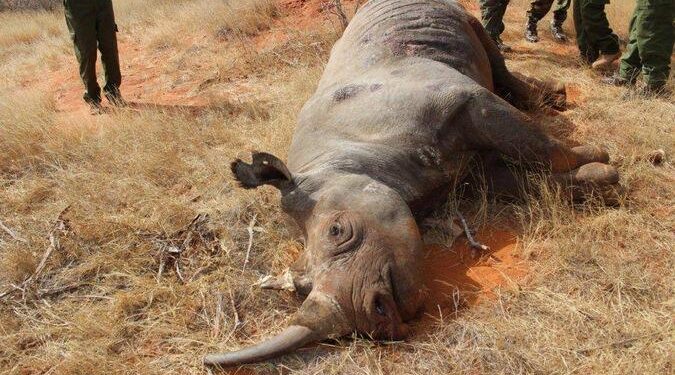Can Science Resurrect Extinct Rhinos? The Surprising Truth
Times of India
In the face of a global extinction crisis, the struggle to save rhinoceroses has become a powerful emblem of our planet’s vulnerability. With their numbers plummeting due to illegal hunting and habitat destruction, conservationists are pushing boundaries in their efforts to protect these magnificent animals. In an astonishing blend of conservation and advanced technology, researchers are investigating the intriguing possibility of reviving extinct species such as the woolly mammoth—and even more surprisingly, the Indian rhino. Utilizing breakthroughs in genetics and cloning techniques, scientists are daring to explore whether it is feasible to bring rhinoceroses back from near extinction. This article examines the scientific foundations behind this ambitious goal while considering its ethical, ecological, and technological implications. The revelations may not only astonish you but also provoke a reevaluation of our perspectives on life and extinction today.
Pioneering De-Extinction Technology for Rhino Conservation
The dialogue surrounding rhino preservation has dramatically evolved as researchers investigate de-extinction technologies’ potential. Innovations in genetic manipulation and cloning present an audacious new avenue for wildlife conservation initiatives. While species like the woolly mammoth capture headlines regarding possible revival, attention is now shifting toward the Northern white rhino, a subspecies on the verge of disappearing entirely. Techniques such as somatic cell nuclear transfer (SCNT), CRISPR gene editing, and artificial reproductive technologies could facilitate breeding new generations of rhinos—yet this endeavor raises significant ethical and ecological questions that warrant thorough examination.
The ramifications associated with resurrecting extinct species extend beyond simple restoration efforts; they encompass impacts on current ecosystems, resource availability issues, and valuable lessons derived from historical extinctions that inform today’s conservation strategies. For example, while reviving Northern white rhinos might appear achievable at first glance, challenges persist—such as ensuring genetic diversity within populations and providing suitable habitats for their reintroduction into nature. A recent study underscored these complexities through comparative analyses between past extinctions and genetic recovery attempts—highlighting that a holistic approach is essential moving forward.
| Challenges | Considerations |
|---|---|
| Climate Change | How can we adapt revived species to contemporary environmental conditions? |
| Lack of Genetic Diversity | A robust gene pool is necessary to avoid inbreeding issues. |
| Sufficient Habitat Availability | Adequate habitats must be secured for successful survival. |
Will funding shift away from existing endangered species towards de-extinction projects? |
Ethical Considerations Surrounding Woolly Rhinoceros Resurrection
First off,
the ecological consequences tied to reintroducing a long-absent species into its natural environment raise critical concerns.
Scientists must confront whether current ecosystems can accommodate newly introduced animals lacking natural competitors or predators.
Additionally,
there are apprehensions about how existing wildlife might be affected since introducing Woolly Rhinoceroses could disrupt established food chains along with other intricate ecological relationships.< / p >
< p >Furthermore,
the motivations driving de-extinction initiatives often come under scrutiny.
Is there genuine commitment towards biodiversity restoration or merely distraction from urgent conservation challenges facing currently endangered animals?
The resources allocated for high-stakes projects like these could arguably yield greater benefits if directed towards protecting living ecosystems instead.< strong >Conservation efforts aimed at safeguarding existing flora & fauna should take precedence over speculative endeavors.< / strong >
Striking balance between scientific ambition & responsibility requires thoughtful consideration alongside public discourse.< / p >
< / section >
Innovative Strategies for Preserving Endangered Species Amidst Extinction Threats
Amongst these pioneering methods lies use case involving CRISPR gene editing which shows promise particularly concerning northern white rhinoceroses whose population dwindled down significantly over time.
Researchers aim at extracting DNA samples from preserved specimens enabling creation viable embryos potentially leading us closer toward future where majestic beings roam freely once again!
This bold venture emphasizes necessity behind comprehensive approaches encompassing:< / p >
- < strong >Habitat Restoration:< / strong > Revitalizing ecosystems provides safe havens crucial supporting various animal populations! < li >< strong >Genetic Diversity:< / strong > Ensuring revived groups possess adaptability required thriving long-term!< li >< strong >Community Engagement:< / strong > Involving local communities fosters collaborative spirit essential achieving sustainable outcomes!
< p>The fusion between cutting-edge technology & traditional practices presents unique opportunities combating extinction threats effectively!
For instance,
application artificial intelligence (AI) revolutionizes wildlife monitoring processes allowing researchers analyze vast datasets identifying behavioral patterns among different animal groups without disturbing delicate environments around them!
Utilizing drone surveillance coupled automated camera traps enables collection vital information efficiently minimizing human interference risks involved during data gathering phases! As innovative strategies merge alongside renewed global commitments towards conserving biodiversity outlook appears increasingly optimistic especially concerning enigmatic creatures like rhinoceros! Collaboration bridging tech-nature realms underscores urgency advocating interdisciplinary approaches tackling ongoing battle against looming extinctions head-on!< /p >
In Summary:
The pursuit revitalizing lost species such as wooly mammoths has sparked intense debates surrounding de-extinction sciences’ viability! As groundbreaking research continues advancing rapidly questions arise regarding feasibility restoring iconic rhinoceros populations back into existence! Although progress made through advancements within genetics holds immense potential numerous ethical dilemmas remain unresolved prompting deeper reflections upon implications posed by these scientific pursuits not just limited biodiversity but overall effectiveness related ongoing conservational endeavors too! Standing poised amidst transformative developments it becomes evident journey answering whether science truly possesses capability resurrect dead rhinos proves equally complex yet captivating undertaking worth following closely throughout upcoming months ahead!






























